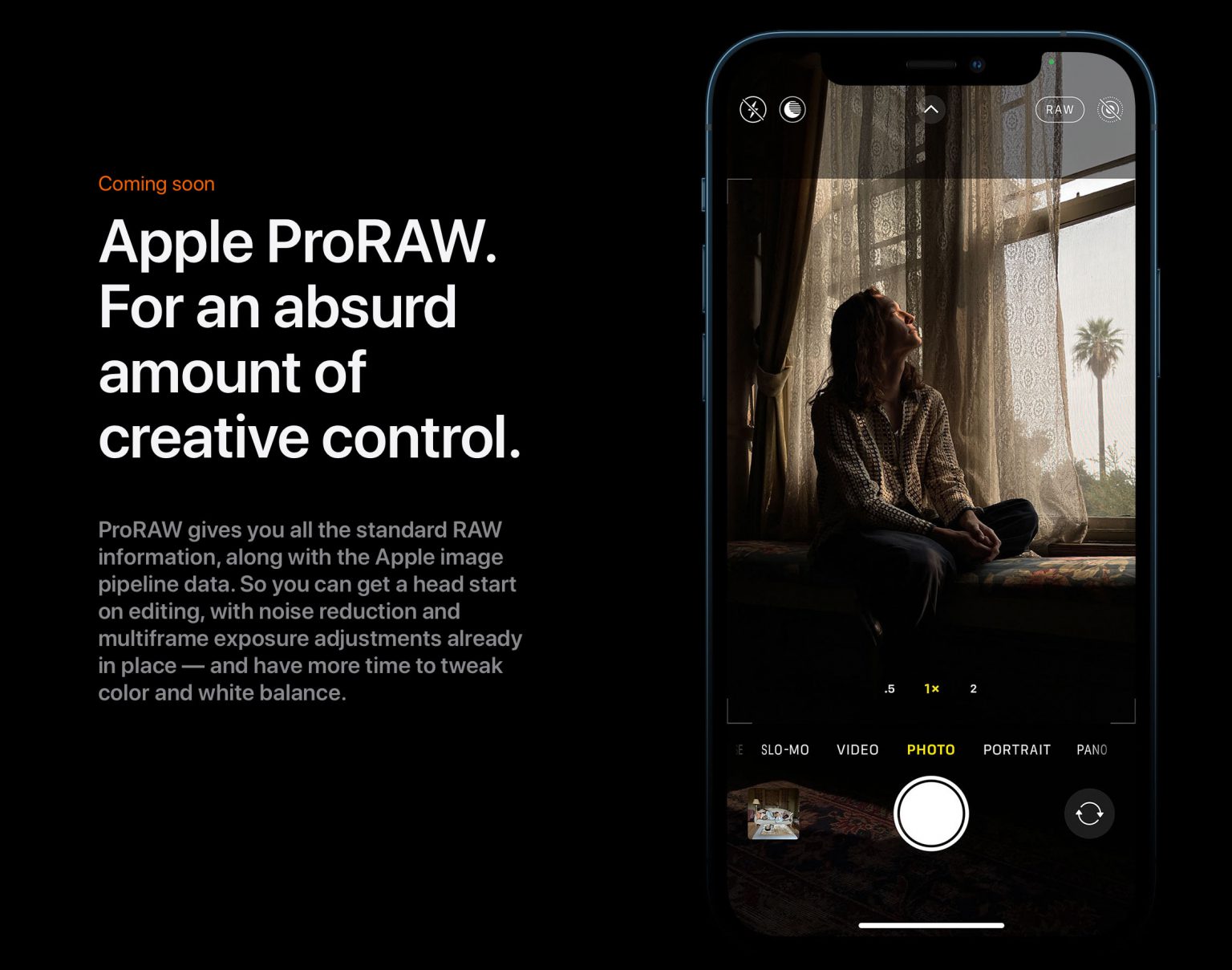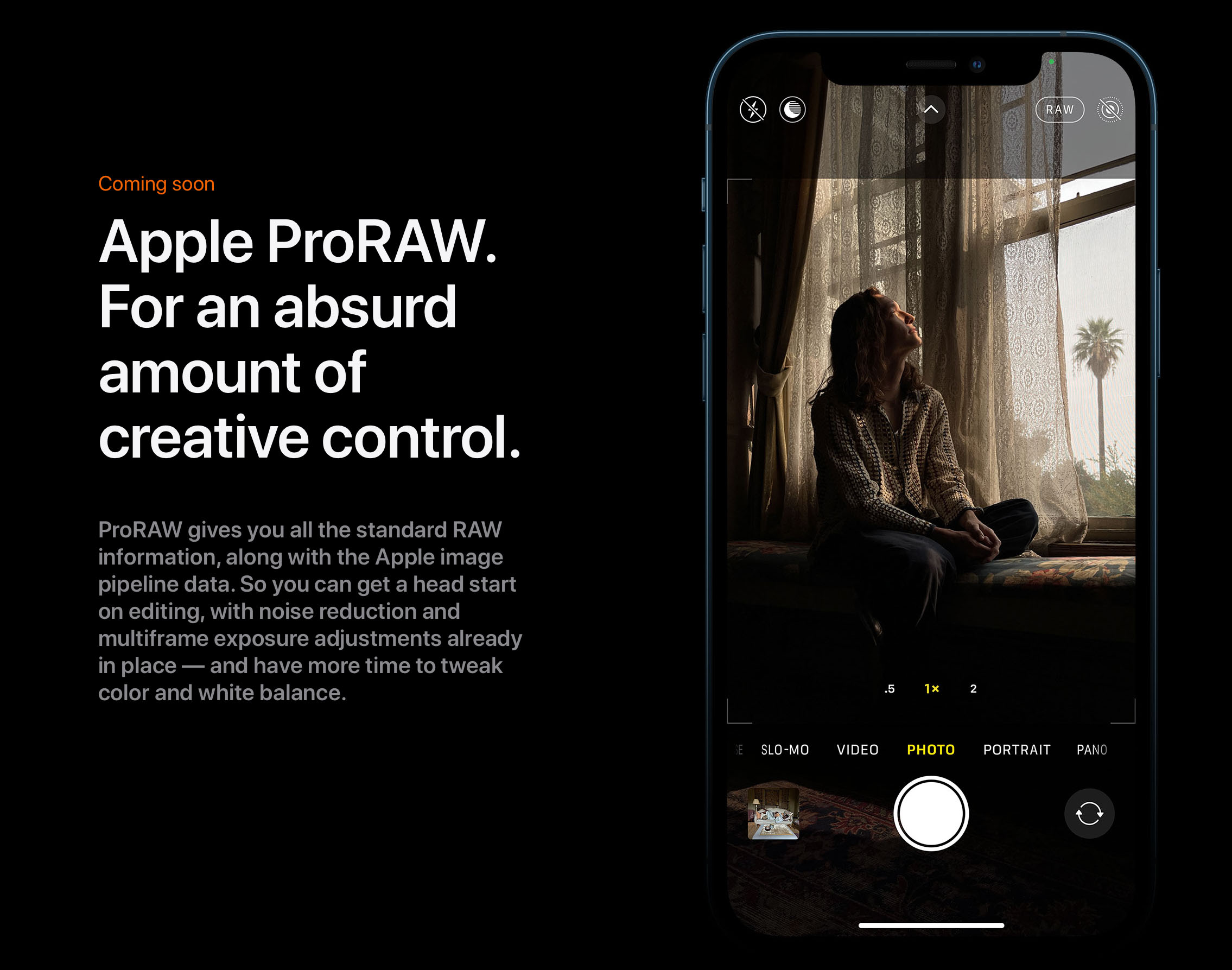
With the Apple iPhone 12 Pro Max, Cupertino has shifted up a gear and are marching into enthusiast camera, and even professional territory with the new technology. 5 axis IBIS, 10bit Hybrid LOG Gamma (Dolby Vision HDR) and even a new RAW format for photography dubbed ProRAW (not to be confused with ProRes RAW). There’s also now an improved optical zoom and 47% larger main sensor with 26mm lens – at least 13 stops dynamic range in ProRAW mode, which brings the sensor closer and closer to the important 1″ mark where low light performance and image quality takes a huge step up from small chip sensors.
It has been an incredible year for smartphone camera technology. As the sensors nudge closer and closer to 1″, image quality looks more and more like a full frame camera thanks to combining that with extremely advanced depth sensors and neural network AI image processing. This should be of huge concern to the established enthusiast mirrorless camera market.
Of the smartphone camera advances this year, I’ve had a taste of all of them to this point and will be buying the iPhone 12 Pro Max as well. Unfortunately Apple have had to put the shipping date back to November 13th for this model with pre-orders starting November 6th, whereas the standard iPhone 12 arrives pretty much next week with very few of the exciting new camera features of the more expensive phone. As it stands currently, I am using the Huawei P40 Pro Plus, Mate XS (foldable) and Xiaomi Mi 10 Ultra. These Android phones offer capabilities and image quality on the very cutting edge of smartphone technology today but the iPhone 12 Pro Max does seem to move the market forward in several ways… 5 axis IBIS (sensor shift stabilisation) means gimbal-like steady 4K/60p shooting and slow-mo, as well as longer exposure times for handheld stills, with better low light performance. LIDAR is also an important step forward, very accurately building a more detailed depth-map for the simulation of 35mm lens focus fall-off and bokeh. It’s also an important step forward for augmented reality and visual FX.
Apple is also using LIDAR for autofocus in low light, where it delivers a 6x improvement in speed and reliability versus on-chip phase-detect AF.
Some of the new iPhone 12 Pro Max camera features at a glance are:
- 87% improvement in low light performance
- 47% larger sensor than the iPhone 11 Pro Max
- 2.5x optical zoom (secondary 65mm F2.2 lens) and 5x total zoom
- 13mm ultra wide lens
- ProRAW for photography (on main sensor and telephoto) *
- DolbyVision for video (at up to 4K/60p)
* Importantly ProRAW uses the composite multi-frame Neural network processing of the system, rather than a single shot of RAW data from the sensor as is the case on normal mirrorless cameras and DSLRs. On many modern smartphones, the single RAW DNG files are noisy, low-fi, and lack the image quality of the 10bit HEIF shots which benefit from all the clever image processing.
The 10bit codec on the iPhone 12 Pro Max features several stages of image processing including in the GPU as well. For HDR Apple have gone with the Dolby Vision standard, so you can apply a LUT in post right there on the phone’s built in editor. The raw video file is recorded in a Hybrid LOG Gamma format. I am told the LUT is not baked into the file. This is an amazing step forward for smartphone video shooting, but there was no 8K on offer or extremely high resolution quad bayer sensor. The Xiaomi Mi 10 Pro with 108 megapixel sensor and the newer Mi 10 Ultra both shoot 8K video oversampled from the full width of the sensor. It is far superior to what the Samsung S20 Ultra offered earlier in the year in 8K mode which is a crop and very noisy. However the 8K on these devices does not pixel peep very well, so is best scaled back to 6K or 4K for actual viewing. It makes for a very crisp 4K file. On the iPhone 12 Pro Max, video comes from the 12MP native resolution of the sensor very much like 4K on the Sony A7S III.
What’s missing?
Well there is no built in gimbal, as found on the Vivo X50 Pro but the 5 axis IBIS pretty much makes up for that, especially when combined with OIS as well.
There is no 5x 135mm or 10x 250mm periscope folded optical zoom as found on the Huawei P40 Pro and P40 Pro Plus. In my experience, these are utterly extraordinary – and don’t even make the phone any less thin than an average flagship handset.
There is of course no foldable OLED device from Apple. The Huawei Mate XS is truly a one-off at the moment, considering it combines a Leica camera system based on the Mate 30 Pro and P30 Pro with such a unique form factor. My review of this is coming soon.
For my opinion on the impact of this new technology on the traditional camera industry, stay tuned.





